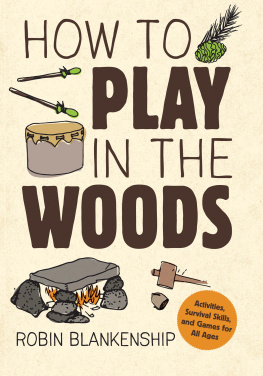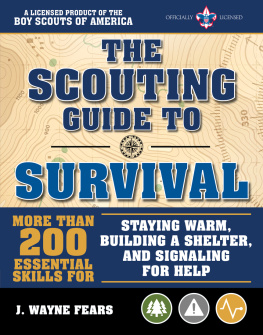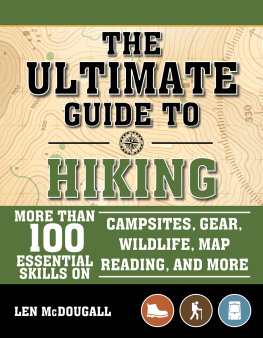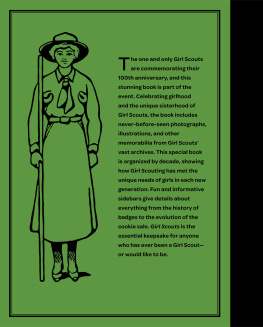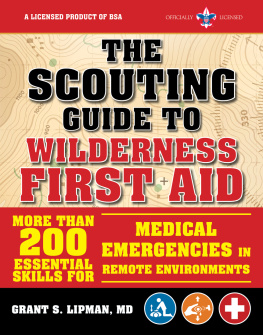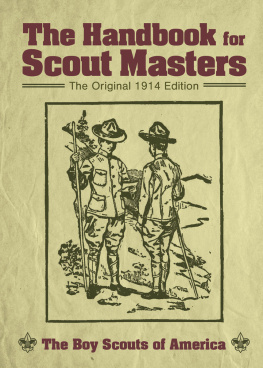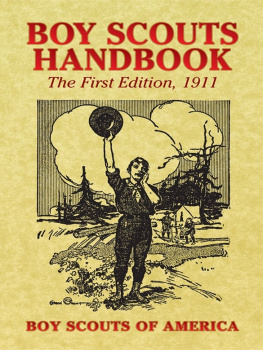Text Copyright 2018 by J. Wayne Fears
Illustrations Copyright 2018 by Rod Walinchus
All images by J. Wayne Fears, unless otherwise indicated
Logo Copyright 2018 The Boy Scouts of America
All rights reserved. No part of this book may be reproduced in any manner without the express written consent of the publisher, except in the case of brief excerpts in critical reviews or articles. All inquiries should be addressed to Skyhorse Publishing, 307 West 36th Street, 11th Floor, New York, NY 10018.
Skyhorse Publishing books may be purchased in bulk at special discounts for sales promotion, corporate gifts, fund-raising, or educational purposes. Special editions can also be created to specifications. For details, contact the Special Sales Department, Skyhorse Publishing, 307 West 36th Street, 11th Floor, New York, NY 10018 or .
Skyhorse and Skyhorse Publishing are registered trademarks of Skyhorse Publishing, Inc., a Delaware corporation.
Visit our website at www.skyhorsepublishing.com.
10 9 8 7 6 5 4 3 2 1
Library of Congress Cataloging-in-Publication Data is available on file.
Cover design by Brian Petersen
Print ISBN: 978-1-5107-3774-7
Ebook ISBN: 978-1-5107-3777-8
Printed in China.

CONTENTS
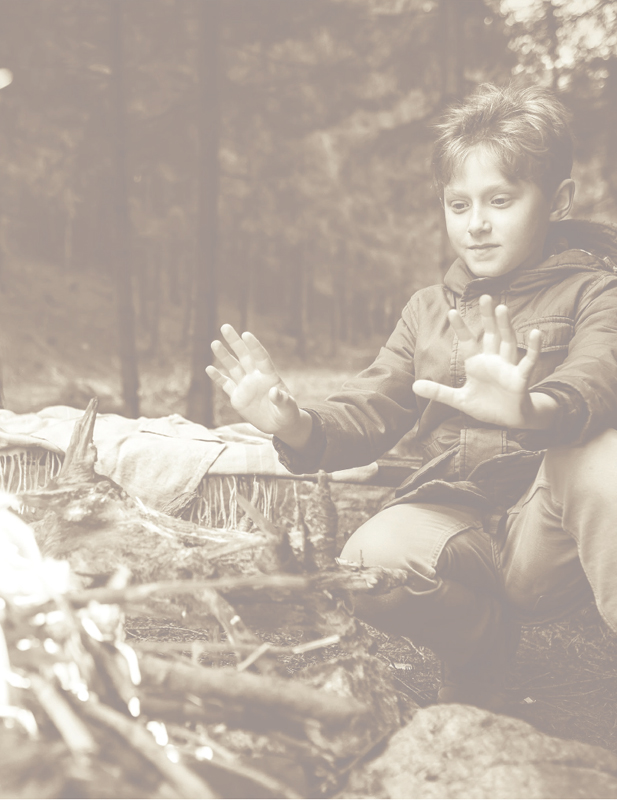
INTRODUCTION
Each year hundreds of American outdoor enthusiasts find themselves in an unexpected outdoor emergency. They get lost, injured, or stranded and suddenly find themselves cut off from the rest of the world. They suddenly have to depend upon their survival skills to survive. For most people, thanks to modern communications such as cell phones, satellite messengers, and personal locator beacons (PLB), it is merely a sobering two- or three-hour adventure. In fact, with todays high-tech methods of search and rescue, the majority of missing people are found within twenty-four hours, some a sobering seventy-two hours, after they have been reported missing. However, for some who did not take the proper precautions before they left home or do not have survival skills, it can end in tragedy.
Anyone who travels into the backcountry areas near home or deep into the wilderness needs a good working knowledge of basic survival skills. Also, those who travel through, or fly over, unpopulated areas need survival skills. The same can be said for those who venture out onto large bodies of water. Chances are good they will never become stranded in these situations, but if it happens to you, then it is a 100 percent chance.
One of the first questions I hear when conducting survival seminars is this: Why should anyone learn survival skills? Then they challenge: This is the twenty-first century. Wilderness survival is no longer needed.
Few people go into a state park, national forest, or even the woods behind their home expecting to need survival skills. That it-will-never-happen-to-me attitude gets untold numbers of people into serious trouble each year. All too often they are found dead near snowbound automobiles, in desert sands, on mountain slopes, near downed aircraft, and in the woods near their homes. They succumb to hypothermia, are struck by lightning, or drown in flash floods. Many panic and start running, often over cliffs. Sometimes they simply lie down and die because of overwhelming fear and the lack of the will to live.
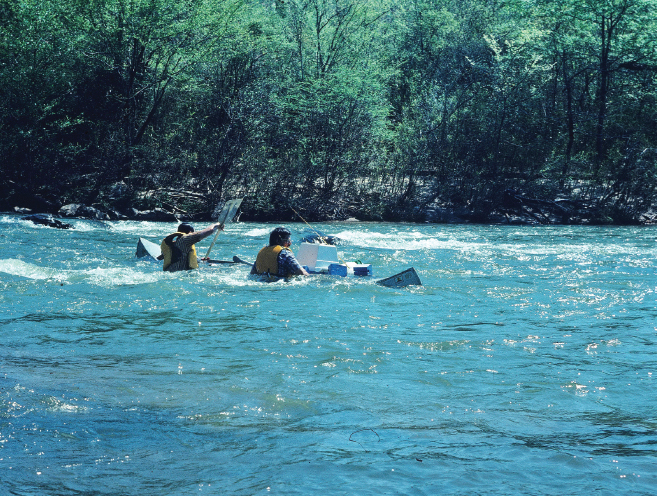
A canoe overturn in swift water can leave the occupants in a survival situation quickly.
A vast majority of people in our technological society think they will never find themselves suddenly cut off from the rest of the world. But the news media often carry stories about people who suffer and die because they dont have even the basic survival skills to keep themselves alive in an emergency. The truth is, a survival crisis can confront anyone suddenly, without warning.
I have spent most of my life in the outdoors studying the challenges of survival. Because of the nature of my career, Ive seen both sides of the coin. I have been caught in severe survival situations, and have been on many search-and-rescue missions. Much of what I have learned is in this book.
This book takes to heart the Boy Scout motto of Be Prepared! In it we approach the subject of survival from a preparedness standpoint, rather than a collection of pioneering skills and neat tricks that you cant remember, or get to work, when you really need them. I advise the reader that spending time and energy building traps and snares are an unreliable way of getting food if you lack trapping savvy and an above-average knowledge of your quarry. You will not find pages of flowering wild plants that are edible because they may not grow where you find yourself in an emergency, and if they do it would probably be in the dead of winter when the plant would be impossible to identify or locate.

This hunter wisely decided to make a comfortable camp and await rescue rather than attempt to walk out.
This book takes a realistic approach to the subject of survival. Throughout, I stress preparing for the unexpected, beginning before you leave home. My aim is to prepare you, both physically and mentally, to survive those critical first seventy-two hours. The keys are to learn that an emergency can befall you and then know what to do. I hope you will encourage other members of your troop, Explorer Post, family, and friends to learn these skills as well.
The survival training I received from both the Army and the Air Force emphasized eight basic points of survival that have helped get me through many survival situations. As a memory jog, the following acrostic, using the word SURVIVAL, helps in recalling these points, several of which appear over and over again in this book.
S ize up the situation
U ndue haste makes waste
R emember where you are
V anquish fear and panic
I mprovise
V alue living
A ct like the natives
L earn basic survival skills
SURVIVAL TRAINING PAYS
Several years ago, when I was working as a wildlife manager in Georgia, I helped lead a search for a missing hunter in the rugged mountains along the Georgia-North Carolina boundary. We were told that this hunter had little hunting experience but had received extensive survival training. In a blinding rainstorm, it took us two days to find the lost hunter. Much to our surprise, when we found him he had almost established a comfortable homestead.
When he first realized he was lost, he stopped walking and picked an opening in the dense woods to establish a survival camp. He immediately put out ground-to-air signals. Realizing bad weather was on the way, he built a shelter under some overhanging rocks that kept him dry and out of the wind. He gathered plenty of firewood and stored it in his shelter. Next, he built a fire, complete with a green log reflector, to keep his shelter warm. It was his fire that led to his being found. The hunters survival camp was so comfortable that those of us in the search team used it for an overnight rest before packing out the next morning.




